June 1st is World Reef Awareness Day, and in light of this, we thought we’ve put together some of the most interesting facts about the Great Barrier Reef that you may not know.
We’ve got so many facts about the Reef to get through, so this is going to be a two part-er.
The Great Barrier Reef is one of the world’s most famous natural attractions, and most certainly Australia’s most popular tourist attraction. It is located off the coast of Queensland, in the North-East region of Australia.
Here on Fitzroy Island, we’re lucky enough to be in the very same waters that the Great Barrier Reef calls home – the Coral Sea – with some coral gardens of this incredible reef system literally only metres from our shores.
Before we jump right into our Reef facts, let’s talk a little bit about what World Reef Awareness Day is.
What is World Reef Awareness Day?
World Reef Day is a relatively new celebration, having been conceptualised in January of 2021. The day was proposed by the certified natural sunscreen company, Raw Elements USA with the intention of raising awareness among businesses, communities, and the public of the fragility of the biological systems of the coral reefs all over the world.
Coral reefs serve many different purposes, from providing food and shelter for countless marine species to aiding in scientific and medical research. Their survival is vital for the world as we know it, and unfortunately, they face dangers every day from climate change, pollution, coral mining, and other harmful human activities.
The aim is to foster conversation, ideas, and techniques of what we can do to reduce our impact on these precious ecosystems.
So, now we know a little bit about the purpose of World Reef Day, let’s learn about the world’s largest and most well-known reef system – the Great Barrier Reef.
10 Interesting Great Barrier Reef Facts
Here are some of the most incredible and interesting facts we’ve learned about the Great Barrier Reef.
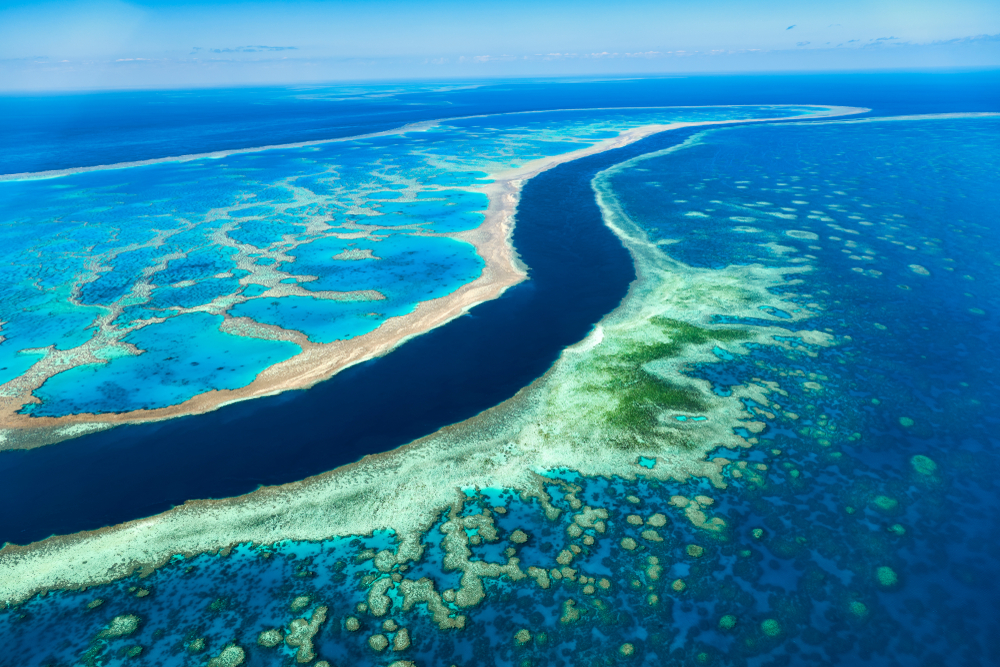
1. The Great Barrier Reef is so much bigger than you can probably comprehend.
When something has great in the title, it’s probably no surprise that it’s going to either be incredible or exceptionally large, and hey, the Great Barrier Reef is both of these things.
The Reef covers an area of approximately 344,400 square kilometres and spans a distance of about 2300km. The reef system runs along about two thirds of the coastline of Queensland, from the tip of the Cape York Peninsula down to Bundaberg.
It also happens to be the largest living structure, built by living organisms, known as coral polyps. And is also the location of about 10% of the world’s coral reefs.
To give you an idea of just how large the reef is, here are some comparisons:
- It is larger than Switzerland, Holland and the UK combined
- It is larger than seventy million soccer fields
- It is larger than Victoria and Tasmania combined
- New Zealand would fit in the area of the Great Barrier Reef 1.3 times
- The length of the reef is equivalent to the distance between the mouth of the Amazon River and Rio de Janeiro in Brazil
Even if you dove in the reef every day, you wouldn’t be able to discover it all.
Pretty great right?
2. It is made up of lots of reef systems
Though the name might have you thinking it is one long reef, the Great Barrier Reef is made up of around 2,900 individual reef systems. Each of these is made of various coral species, both hard and soft corals.
There are believed to be around 600 different species of coral, with 450 of those being hard corals and 150 being soft corals. These various species make it a uniquely diverse and complex ecosystem.
In addition to the thousands of coral reefs that make up the Great Barrier Reef, the reef’s marine area also encompasses 600 islands and 300 coral cays.
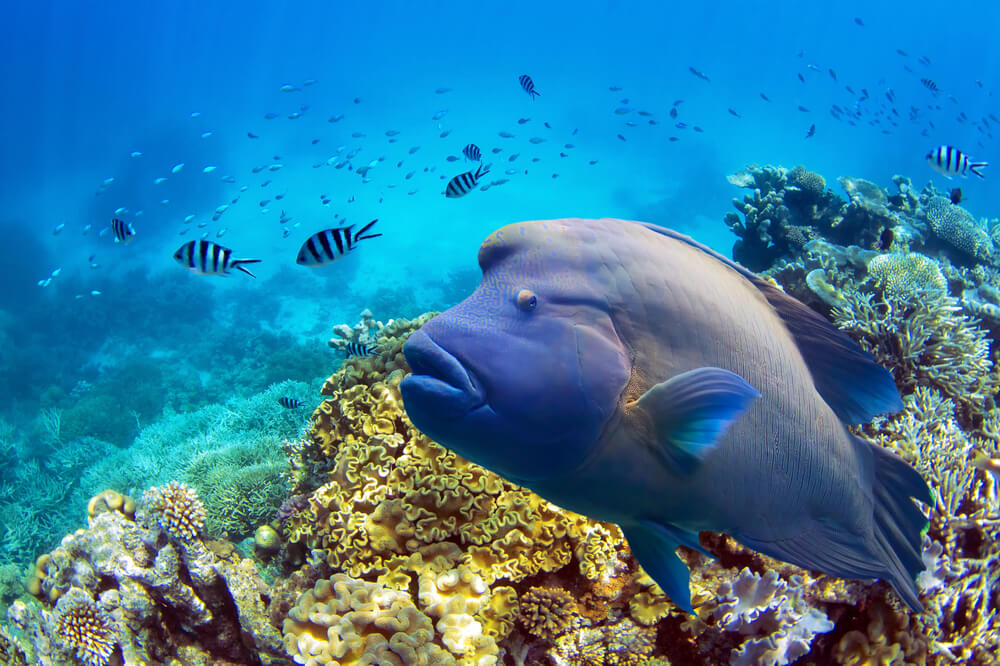
3. It is home to an endless number of species of marine creatures
One of the reasons the reef is of such important is because it is the home for a lot of various marine animals. We couldn’t possibly list all of the individual species that live in the reef, but here is a summary of the number of different animal species that can be found in the reef:
- More than 1600 species of fish
- 30 species of dolphins and whales
- 6 species of sea turtles
- 17 species of sea snakes
- 134 species of sharks and stingrays
- 5,000 types of molluscs
- 215 species of birds
It is estimated that around 1300 of these various species in the reef can only actually be found in the Great Barrier Reef, and nowhere else on Earth.
On top of these species, the reef is home to around 10% of the world’s fish species and is also the safe haven for various endangered marine creatures, such as the dugong. There are around 11,000 dugongs that call the reef home, which is the largest population of dugongs in the world.
4. There is a lot just waiting to be discovered
Given the enormous size of the reef, it is understandable that not all of it has been discovered. In fact, in 2020 a new coral reef structure was found around 130 kilometres from the coast of Cape York.
The particular reef that was discovered is a large, detached reef that was likely to have been established around 20 million years ago. It is an isolated reef and is only one of eight of this kind in the region. It is also the first reef of its kind to be discovered in the last 120 years.
But not only are there likely to be many other reefs waiting to be found, but it is also highly likely that there are hundreds of thousands unknown marine species living in the waters of the Reef.
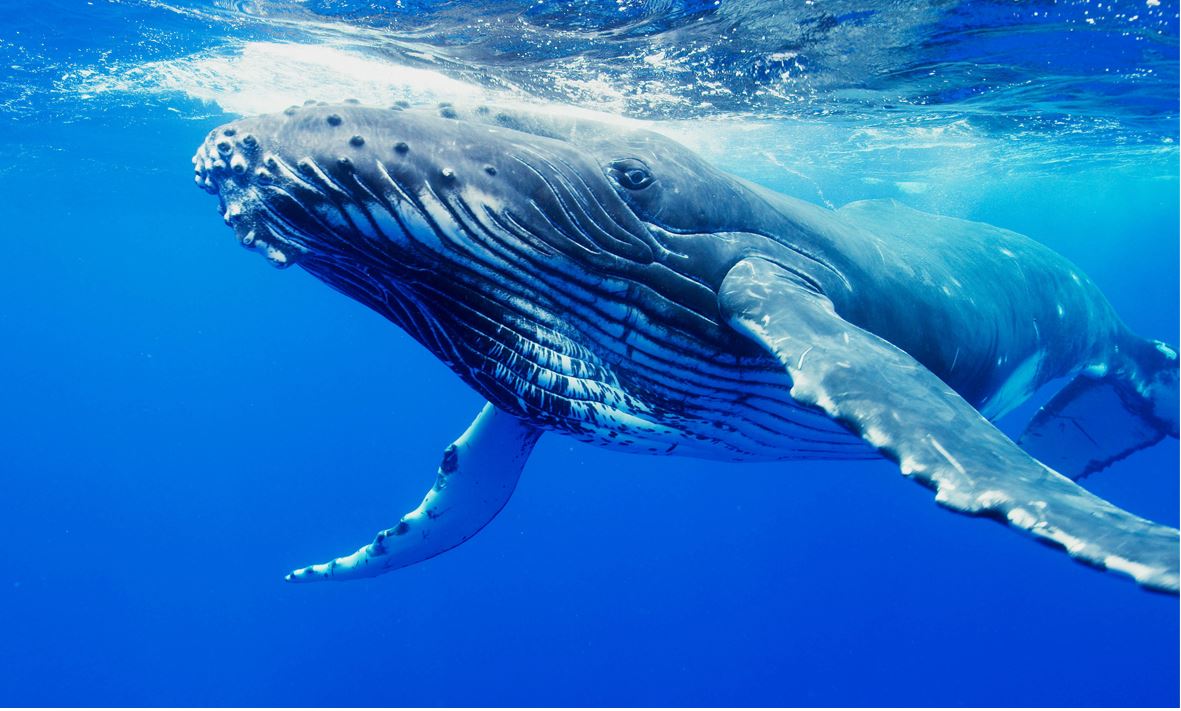
5. Whales visit the reef every year
Over the cooler months in the southern hemisphere, the Great Barrier Reef gets some visitors who are looking for a little fun in the sun.
Southern Humpback Whales migrate from their homes in Antarctica up to warm Coral Sea waters to be able to reap the benefits of the warmer waters. This usually occurs from around May to November, with the 5,000km trek being the world’s longest mammal migration.
After their long journey, which can be over a period of three months, the humpback whales mate, calve and nurture the newborn whales, and enjoy the spoils of the warm and nutrient rich region.
Thousands of whales make this journey every year, with it believed that up to 60,000 whales doing so. Though there are lots of whales making their way to Coral Sea, spotting one takes patience and is an extremely majestic site to see.
6. Six of the seven species of sea turtles call the Reef home
Sea turtles are one of the oldest living species on the planet, having evolved over the last 100 million years. Due to human actions that include hunting, development, pollution, and climate change, all seven species of the world’s sea turtles are considered to be endangered, with 3 species classified as critically endangered.
Sea turtles are vital to the reef as they help to maintain various environments like seagrass and coral reefs, which serve as homes for all sorts of species, like shrimp, lobster, tuna and even dugongs.
Sea turtles have a few factors working against them, other than just human actions that have endangered them, including their incredibly long lifespan, where they spend a lot of their time travelling all over. They also wait many years before they reproduce, and need beaches in order to do so, as this is where they lay their eggs and nest. Unfortunately, many sea turtles don’t make it past their first year of life.
While this is extremely unfortunate, it’s not all doom and gloom. The Great Barrier Reef is home to six of the seven species, including the Hawksbills, Leatherback, Loggerhead, Olive Ridley, Flatback and Green Sea turtle. The loggerhead turtle was close to extinction a few decades ago, but through careful management over the last few decades, the area of Mon Repos (at the southern end of the Great Barrier Reef) now has the largest concentration of nursing loggerhead turtles.
In addition to that, here on Fitzroy Island we have the Cairns Turtle Rehabilitation Centre, which is a volunteer run centre that seeks to educate people on sea turtles, as well as their importance and how we can help them. And they also help to care for sick, injured, and unwell sea turtles, with the aim of releasing them back to their natural habitat. Learn more about the centre and their work here.
In this part of the world, sea turtle hatching season usually occurs from November to March, with hatchlings beginning to emerge around January and February.
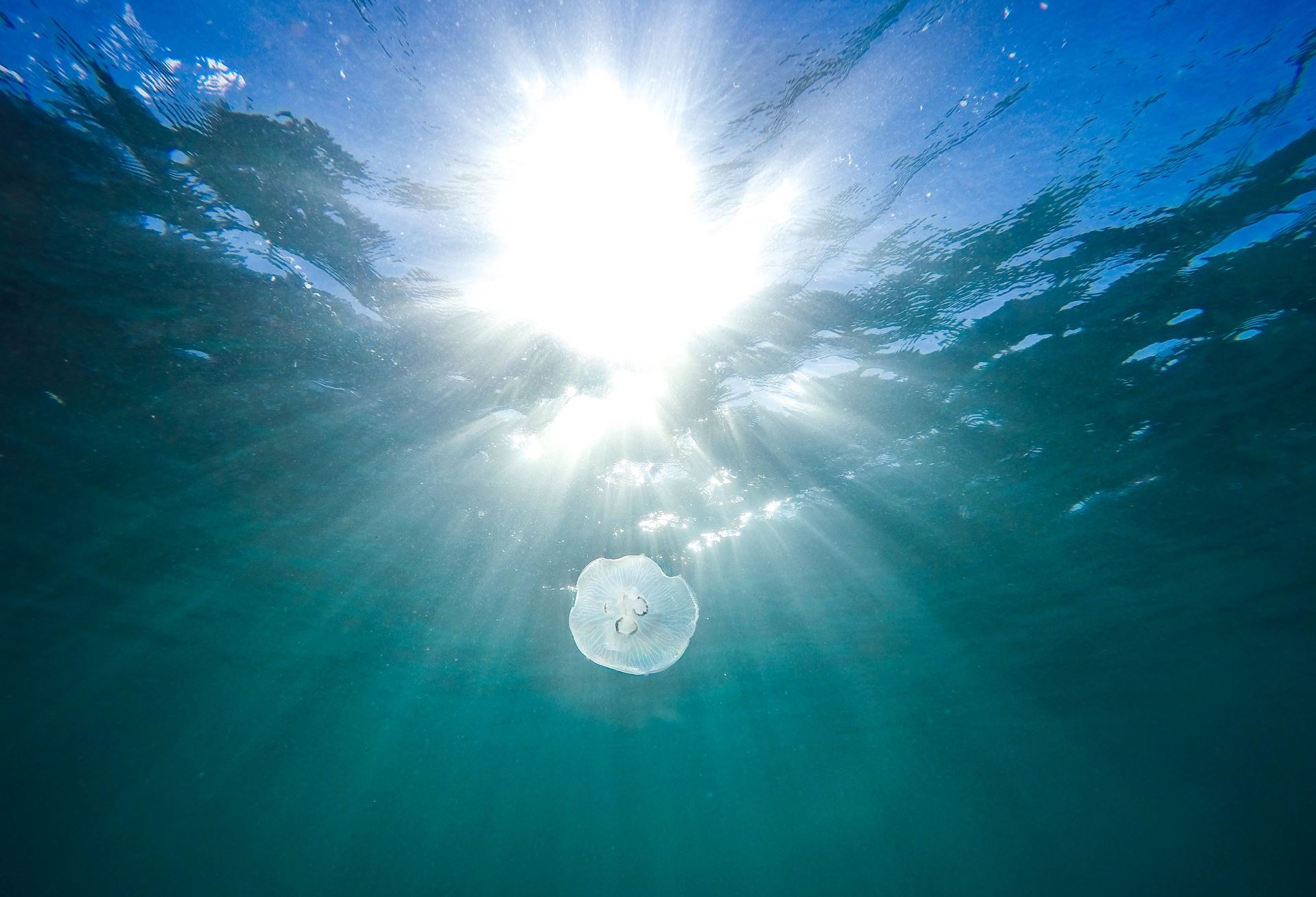
7. Some dangerous creatures live in the Great Barrier Reef
When you think of dangerous sea creatures your mind probably goes to some of the larger (and more teethy) kinds of animals, like crocodiles and sharks, and while they are dangerous, there are some that are extremely venomous.
The blue ringed octopus is one of these creatures. It’s a very small octopus that is brown in colour – that is until it feels threatened. Its distinctive blue rings will become visible when it feels threatened and this is essentially a warning to predators to get away. The venom a blue ringed octopus has is powerful enough to kill more than 20 adult humans, and there is not anti-toxin for it. While it is a danger it isn’t a common creature in the Reef.
One of the more common dangerous creatures is the box jellyfish. Found in warm coastal waters, the most lethal species happen to be found in the northern areas of Australia. Its tentacles are covered in what can be described as very small poison darts. The sting of a box jellyfish can cause paralysis, cardiac arrest, and death, and it can take only a few minutes for this to occur. People sometimes go into shock from the pain of the sting of a box jellyfish. If you’re visiting in stinger season (October to May), you’d be wise to ensure you only swim in safe areas and use a stinger suit.
8. The reef is relatively shallow
The reef system of the Great Barrier Reef is on average, about 35 metres deep. This is important as it helps the coral to survive and thrive, ad they need the light for their photosynthesis process which enables them to grow and get their oxygen.
The shallowness of the reef makes it particularly great for snorkelling and diving, but you can even explore some areas simply by swimming, stand up paddle boarding and taking a glass bottomed boat ride.
While a large proportion of the reef is relatively shallow, in some areas, the reef is as deep as 2000m – which is obviously a lot deeper than humans are capable of exploring easily.
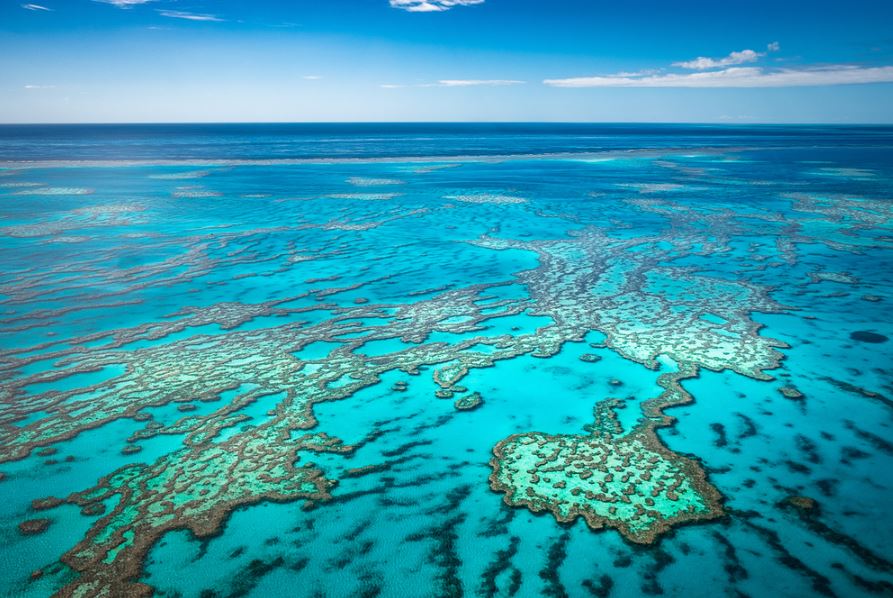
9. Can be seen from space
The shallowness and sheer scale of the reef means that it is visible from space. It’s the only structure built by a living community that can be seen from space and it can even be seen by the naked eye from the moon.
One the reasons it’s able to be seen so well is that the various blue shades of the lagoons of the reef contrast with the deeper blues and dark colours of the rest of the ocean.
While you might not be able to travel to space any time soon to see the reef, you can still get a bird’s eye perspective, with various scenic flights and helicopter rides available. This aerial view gives you an insight into how vast the area actually is. It’s also the only way to really see the beauty of the most romantic place on the reef – the heart shaped reef!
10. More than 2 million people visit per year
The Great Barrier Reef is Australia’s most popular tourist attraction, with more than 2 million people visiting it each year. This generates around 5 billion Australian dollars a year and provides thousands and thousands of jobs.
The way in which people can see the reef is vast, and many of them are eco-certified, meaning that great care is taken to offset the experience. Many tour companies donate funds to various restoration programs that help the reef to live on.
If you enter the Great Barrier Reef by boat, in any form, a Reef Tax must be paid. This is usually around $6.50, and the money goes toward research and conservation efforts for the reef.
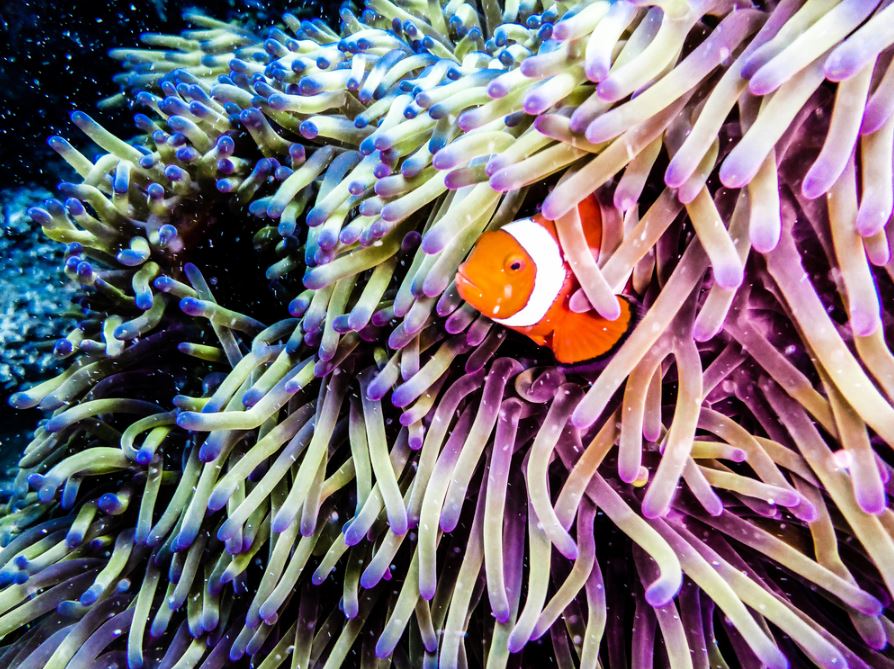
11. BONUS – You might just find Nemo
If you’re a fan of the classic film, Finding Nemo, you’ll most likely be able to find him when you visit the reef.
The clownfish is a type of Anemonefish – there are 12 species. These fish live with sea anemone, which are essentially predatory marine animals that are sometimes called the flowers of the sea. They were actually named after the anemone flower.
The sea anemone can actually harm and sting other fish species, but the clownfish and other anemonefish species have a mucus coating that protects them from this sting. The symbiotic relationship of the two is important as the sea anemone is a shelter for the clownfish, and the clownfish provides nutrients in the form of waste, and they help to scare of predatory fish. While they can live without each other, in warm tropical waters, they often choose to team up.
The sea anemone is often in shallow parts of the reef as they need sunlight to survive, which means you’re more than likely to spot both the sea anemone and Nemo.
The End of Part One
Stay tuned for part two of our Great Barrier Reef facts. In our next piece we’re going to talk about how the Reef began, how it survives, and what is being done to prolong its life.


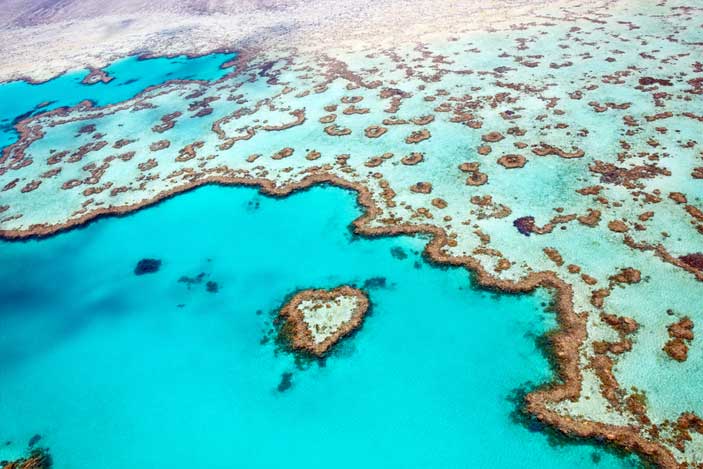

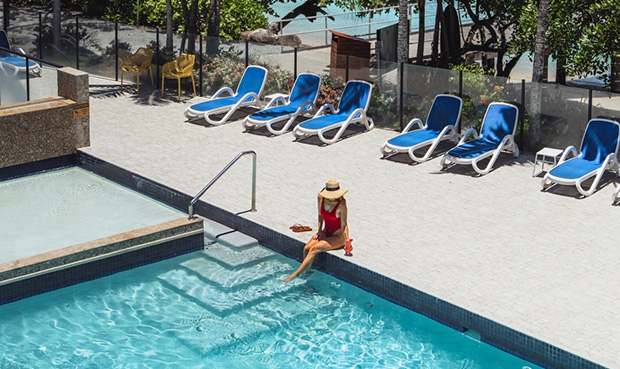
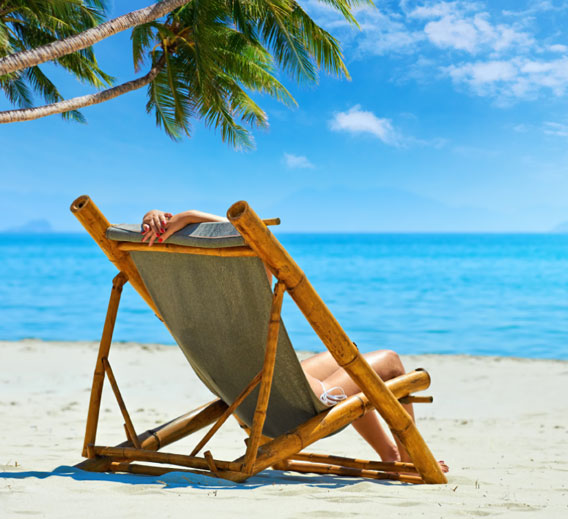
One comment on “Amazing Facts About the Great Barrier Reef – Part One”
Comments are closed.